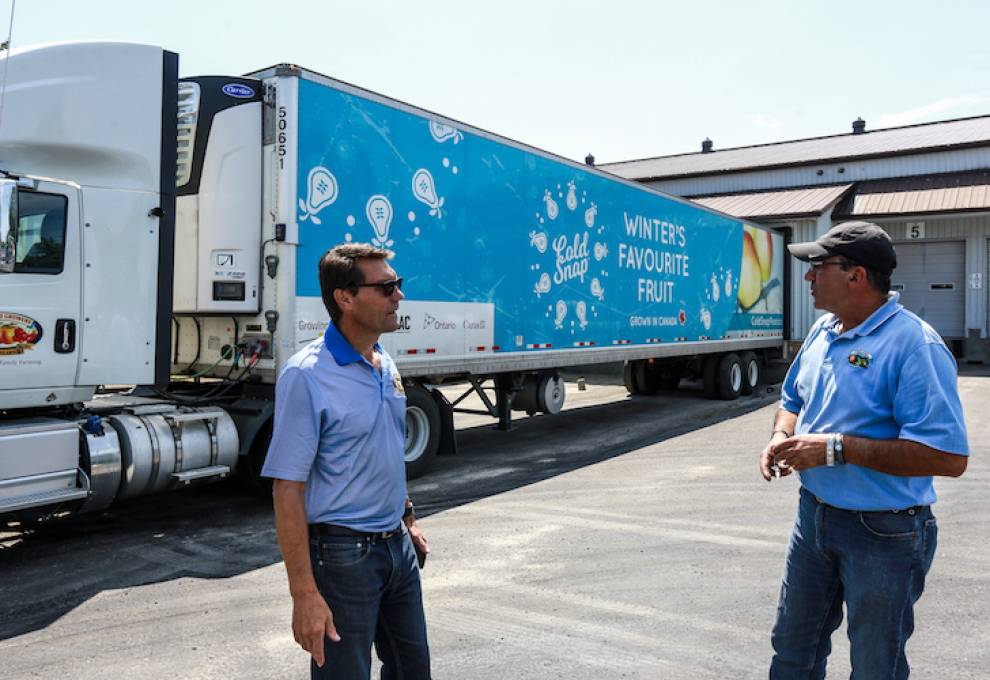
The cost to move product continues to increase. Often your suppliers expect you to pay an FOB price where you pick up production materials and your customers expect you to give them a delivered price to their warehouse or store. In the end you pay freight in and out. It is a reality and one that you should spend some time on to reduce.
You need to get ingredients or production materials to your facility and then finished goods to your customers. How you do it can have a significant impact on your cost of goods. Your customers, retailers and consumers don’t care how you do it, as long as it arrives when they want it and how they want it.
Explore your options
Transportation is a big job and often it is left in the hands of people who are buying or selling but they really don’t understand logistics. You are paying for a service so make sure you have a clear definition of what they will be providing and what you can expect. Hold them accountable when they do not deliver. You should chal- lenge your freight costs as aggressively as your customers challenge you. It all ends up in your cost of goods so every dollar you can save on inbound freight will either fall to your bottom line or help you keep product costs in line.
You should be getting two to three quotes for freight. Often one route will be more attractive to one freight company over another if they can make a full loop or have trucks going back empty from close to your point of pick-up. Trucking is influenced by seasonality like any other business. You might be best served with one company in a part of the year.
Talk to other producers in your area to find opportunities to share freight. If you are paying LTL rates (for part trucks) you can reduce your cost per pallet significantly with full load rates. Your customers should not care if your product arrives on the same truck as your neighbour’s product. Compare hundred weight and full pallet rates. Trucking companies work on both and depending on the weight or cube of your product, one might be better than the other for you.
Consider backhaul
Retailers have trucks going to their stores every day from the distribution center (DC). When they drop their final pallet at the last store, they are empty. Often retailers or their third-party carrier will implement a backhaul program where suppliers can ship their product on the trailer returning to the DC. Common sense would tell you this should be cheaper. It should be, given they have to get their product to the store and they can be one of the biggest users of transporta- tion in the market so their rates should be good.
Unfortunately, retailers see this as a profit center so the rates are often not as enticing as they should be. It is still worth exploring. There are some side benefits in that you are more entrenched with your customer and often they will unload ‘their’ trucks before common carriers at the DC. This can avoid costly wait times and impact the quality of your product. Check it out and don’t be afraid to negotiate.
What you can do
There are a number of options to reduce your transportation costs per case. It is easy to continue to operate as you always have and miss opportunities to reduce your transportation costs per case. Challenge your business to find .25 per case or .50 per case. It will add up.
If you are paying per pallet rates, are you able to put one more row of product on a pallet? Your costs per case will decrease and you might improve efficiencies. You will also use fewer pallets. It is always a good thing to review your case pack, pallet footprint, tie and tier. (The number of boxes in one layer and the number of layers high.) I am not an expert in these areas but any time you can get more units on a pallet you win. Packaging continues to evolve and there might be lighter, more space efficient options available. Full pallet quantities are a huge opportunity if you can get there with your customers. Work hard to get to this most efficient of all solutions. Fuel surcharges were implemented to ensure transportation companies could fluctuate rates with the rising fuel costs. Make sure your carrier is reflecting drops in the price of fuel as well. Sometimes they are slower to react when prices decrease.
When was the last time you reviewed your losses or credits from shipping? This can be caused by temperature problems, pallet assembly, the durability of your case packs or other issues. Put a check and balance in place to ensure someone other than the person coordinating logistics is reviewing these charges. It costs you money and you disappoint your customers.
If you are just starting and still doing distribution yourself, make sure you allow for a future outside cost. So often I see small producers growing to a point where they need outside resources and they have not allowed for this in their cost of goods. Use an estimate to ensure your delivered cost to the warehouse or store reflects what it would be without you doing it for ‘nothing.’
Distribution is a big part of your cost of goods and you should challenge the numbers regularly to find opportunities. A victory can be keeping it flat year over year. Celebrate these with your employees and motivate them to keep the costs as low as they can be.
If you have any questions about distribution, please give me a call at (902) 489-2900 or send me an email at pchapman@gpsbusiness.ca. Next month we will talk about discounting and how they can impact your profits.
RETAIL NEWS
Sobeys makes major announcement
On May 4th Sobeys released the first details of their new structure. No surprise -- there are changes given their recent results and challenges in the different regions. They will be making the following changes to the organization:
• National structure for conven- tional stores (Western Canada, Ontario & Atlantic Canada)
• Quebec will operate as an entity for all banners
• Discount will be separate (although the announcement referenced there would be more decisions in this area)
What does this mean for suppliers?
1) This is a sign the company will be addressing the issues that have been slowing down sales and driving their costs higher than other national retail- ers. In the end they need to sell more and do it profitably. That is good for suppliers but there will be challenges during the transition.
2) There will be a significant amount of disruption within the organization as they determine who will be doing what and where. Respect these challenges when working with Sobeys. It is never easy to work in an environment where decisions are being made about jobs, roles and responsibilities. No doubt something has to be done but it will result in people losing their jobs and that is never easy.
3) Stay very close to your items and where you fit in their plans. You could have a great relation- ship with your current contacts but they could change or be gone all together. Do not bother people but you also have to make sure that new people understand who you are and the value you and your products bring to the table.
4) Regional suppliers need to be more attentive than ever. Depending on what they decide to do, your products could be a much smaller percentage of a new national desk. Stay on the radar but respect your place as the new organization takes shape.
5) Hopefully they will learn from other retailers but there will be people in new jobs with items new to them. Watch orders, planning and the stores carefully. If your product isn’t getting to the shelf there is a reason. Help them figure it out and be part of the solution, not part of the problem.

Add new comment